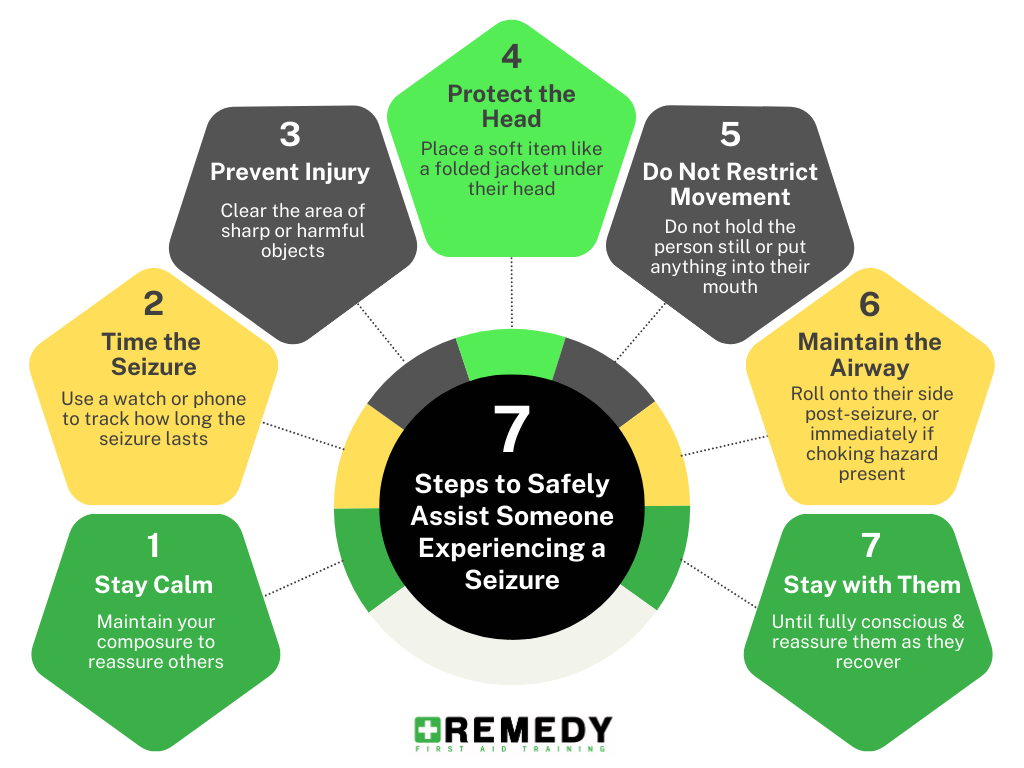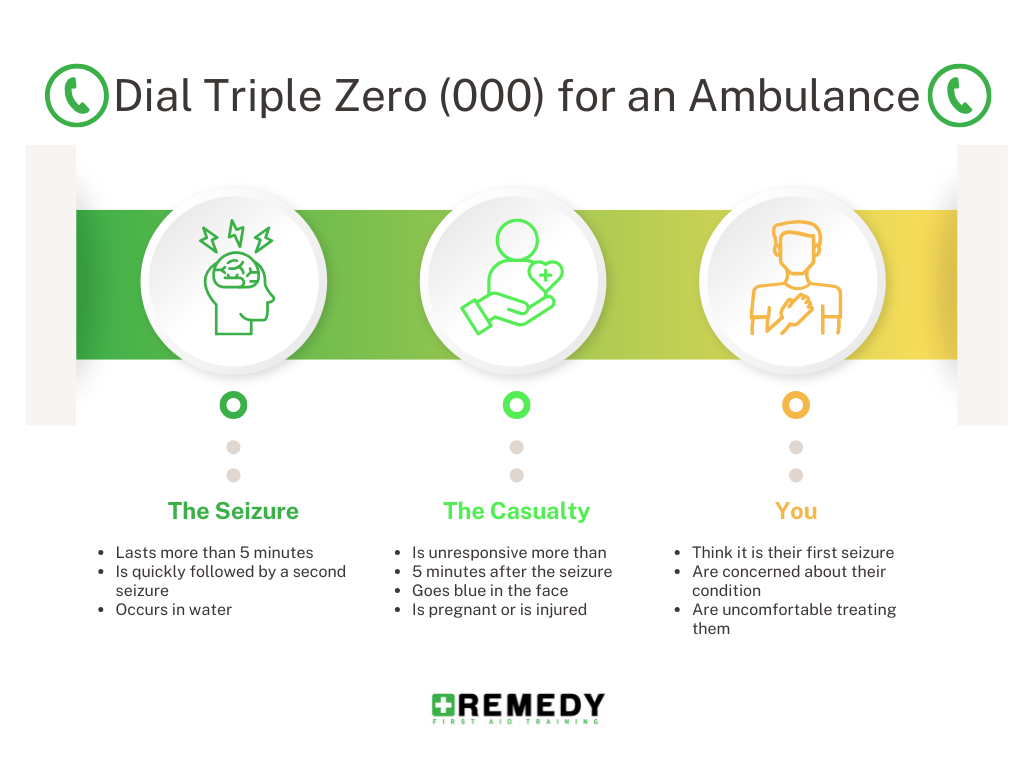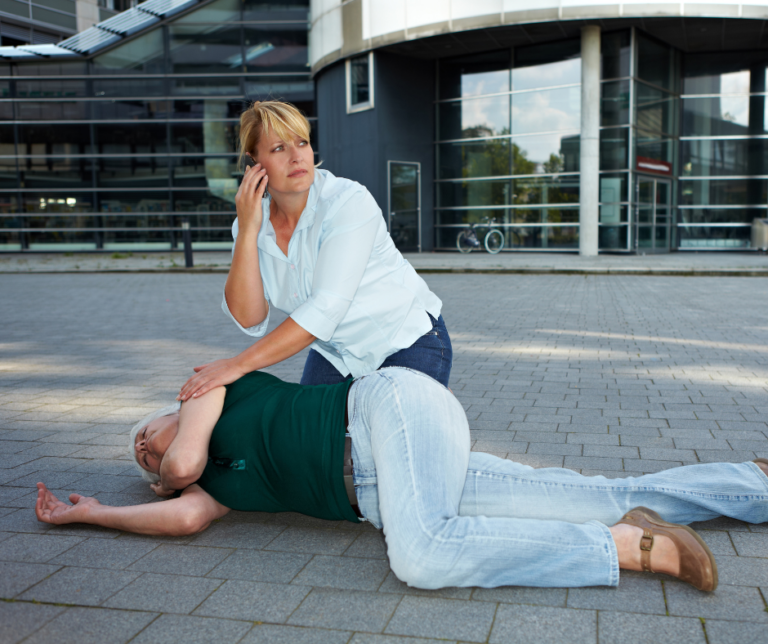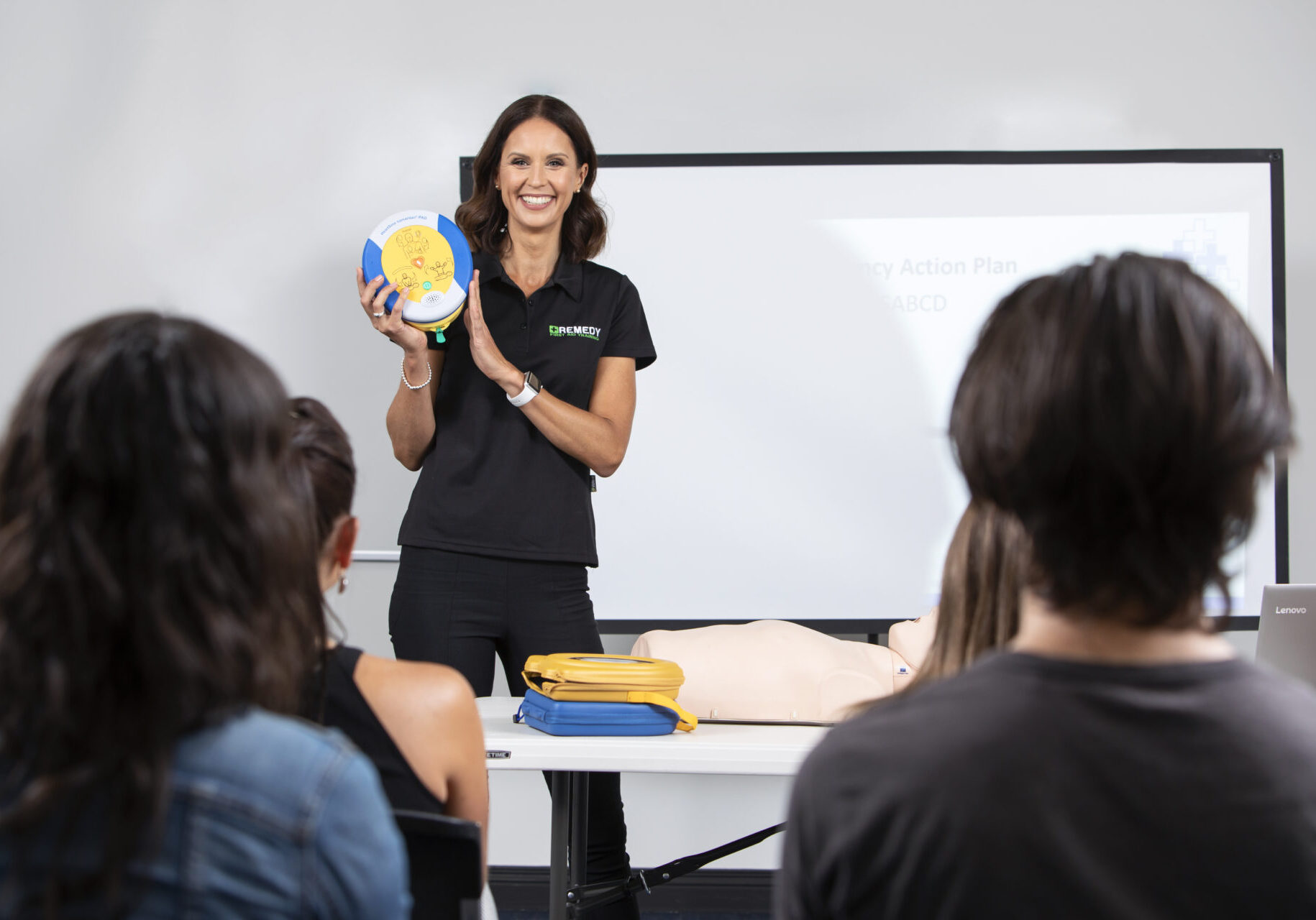7 Steps to Safely Assist Someone Experiencing a Seizure
March 24, 2025
Recognising and Responding to Seizures: A First Aid Guide
When someone experiences a seizure, every second that passes can feel like a lifetime. It’s natural to feel overwhelmed or unsure about what to do-but with the right knowledge, you can provide critical support and comfort during those moments. By equipping yourself with first aid skills, you empower yourself to act confidently and effectively. What is a Seizure? A seizure occurs when abnormal electrical activity in the brain causes a temporary change in behaviour, feelings, movement, or consciousness. People experience seizures for various reasons, including epilepsy, head injuries, infections, or even sudden high fevers in children. They can happen to anyone at any time, making it crucial to understand how to recognise and respond to one. Common Signs of a Seizure Seizure symptoms may vary significantly depending on the type of seizure, but here are some typical signs to watch for:- Sudden stiffening or jerking movements of the body.
- Loss of awareness or responsiveness.
- Confusion, dazed expressions, or staring spells.
- Uncontrolled shaking or convulsions.
- Unusual sensations, Noisy breathing, dribbling.
- Faecal or urinary incontinence.
- Unusual sensations, such as tingling or visual disturbances, before the episode begins (commonly called an “aura”).
- Stay Calm: Your composure can help reassure others around you and keep the situation under control.
- Time the Seizure: Use a watch or phone to track how long the seizure lasts. If it continues for more than 5 minutes or repeats without recovery, call emergency medical services immediately.
- Prevent Injury: Guide the person gently to the ground if they are standing and clear the area of sharp or harmful objects.
- Protect the Head: Place a soft item, like a folded jacket, under their head to prevent head injuries.
- Do Not Restrict Movement: Avoid trying to hold the person still or forcing any objects into their mouth-common misconceptions that could cause harm.
- Maintain the Airway: Roll them onto their side once the seizure subsides, or immediately if food, vomit or fluid enters their mouth.
- Stay with Them: Remain by their side until they are fully conscious and alert. Help them feel safe and explain what happened as they recover.
 When to Seek Emergency Help
Not all seizures require emergency care, but it’s essential to dial Triple Zero (000) for an ambulance if:
When to Seek Emergency Help
Not all seizures require emergency care, but it’s essential to dial Triple Zero (000) for an ambulance if:
- The seizure lasts longer than 5 minutes.
- The person has multiple seizures without recovering in between.
- The individual is pregnant, injured, or goes blue in the face.
- The seizure occurred in water.
- You are uncomfortable treating them or are concerned about their condition.
 Why First Aid Training Matters
First Aid Training is about more than just acquiring knowledge-it’s about empowerment. By learning how to assess situations, provide care, and remain composed under pressure, you can transform moments of uncertainty into opportunities to make a meaningful impact. Whether it’s a friend, family member, co-worker, or stranger, your preparedness could change the outcome for someone experiencing a health crisis – like a seizure.
Every skill you gain builds your confidence to face life’s unexpected challenges. Taking the initiative to learn first aid is an investment in your ability to be the difference between panic and action when it matters most.
Why Remedy First Aid Training
When you choose Remedy First Aid Training, you’re not just selecting a training provider; you’re selecting a team of ex-first responders dedicated to making a difference. With Remedy, you’ll gain relevant insights beyond the manual-learning from professionals who have faced emergencies firsthand and bring real-world experience to every training room.
Sign up for training today
Why First Aid Training Matters
First Aid Training is about more than just acquiring knowledge-it’s about empowerment. By learning how to assess situations, provide care, and remain composed under pressure, you can transform moments of uncertainty into opportunities to make a meaningful impact. Whether it’s a friend, family member, co-worker, or stranger, your preparedness could change the outcome for someone experiencing a health crisis – like a seizure.
Every skill you gain builds your confidence to face life’s unexpected challenges. Taking the initiative to learn first aid is an investment in your ability to be the difference between panic and action when it matters most.
Why Remedy First Aid Training
When you choose Remedy First Aid Training, you’re not just selecting a training provider; you’re selecting a team of ex-first responders dedicated to making a difference. With Remedy, you’ll gain relevant insights beyond the manual-learning from professionals who have faced emergencies firsthand and bring real-world experience to every training room.
Sign up for training today
7 Steps to Safely Assist Someone Experiencing a Seizure

Table of Contents








